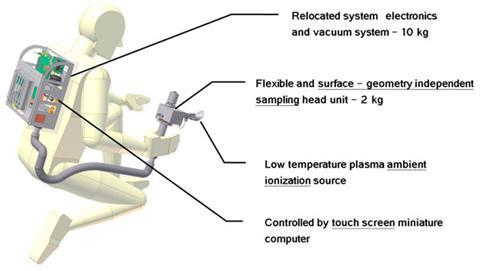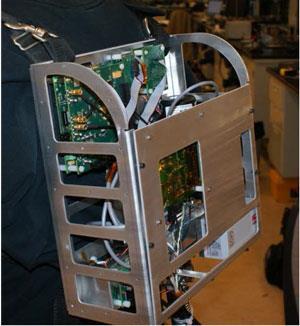
Most mass spectrometry happens in the lab, but it is often faster, safer and more convenient to measure chemicals onsite. The Mini S backpack was developed by the groups of chemist Graham Cooks and engineer Zheng Ouyang to tackle the problems of speedy analysis in remote or hazardous locations.
‘We’ve been working on portable instrumentation for 20 years, but this instrument is significantly improved over what we’ve done before,’ says Cooks. ‘It’s a first in terms of a wearable mass spectrometer – it’s really meant to be walked around with. It can look at complex mixtures without any prior separations, and gives almost immediate answers.’

The team showed the Mini S could detect trace amounts of explosives such as TNT, the neurotoxin mipafox and illegal drugs, including MDMA and cocaine from different surfaces including skin, glass, cotton and cardboard. And the battery pack on the Mini S can keep it running for an hour and a half.
Inbuilt software also makes the equipment user-friendly for non-specialists, says Cooks. ‘It compares the spectra you are recording against a library of compounds,’ he explains, ‘and you can program it to look for certain ions.’ LEDs on the handheld unit can be made to light up when target substances are detected. ‘It’s really designed to be a “point-and-shoot” device for people that don’t know any mass spec or analytical chemistry,’ Cooks adds.
‘These groups have demonstrated a level of usability never seen before with portable systems,’ says Christopher Mulligan, who works on portable mass spectrometry at Illinois State University in the US. ‘The potential applications are quite intriguing. It is not hard to imagine first responders using such a device to monitor environmental impact of a chemical spill or a field botanist using it to discover new natural products.’






No comments yet